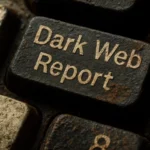On October 5, 2024, Japanese electronics giant Casio experienced a significant cybersecurity breach, disrupting several systems and services. The incident, initially shrouded in mystery, has now been claimed by the notorious ransomware group known as Underground, shedding light on a concerning trend in targeted cyberattacks against major corporations.
The Anatomy of the Casio Cyberattack
Casio’s initial response to the breach was swift and methodical. The company immediately launched an investigation with the support of external cybersecurity experts to assess the extent of the damage and determine if any sensitive information had been compromised. As a precautionary measure, Casio temporarily restricted external access to its systems, demonstrating a commitment to containment and damage control.
However, the situation took a more serious turn when the Underground ransomware group added Casio to its dark web “leak site,” publishing a substantial amount of allegedly stolen data. This development not only confirmed the severity of the breach but also highlighted the sophisticated nature of modern ransomware operations.
Underground’s Modus Operandi and Claimed Data Theft
The Underground group, active since approximately July 2023, has primarily targeted Windows-based systems. Their attack on Casio reportedly resulted in the theft of critical data, including:
- Personal information of employees
- Financial documents
- Emails
- Customer data
- Source code
If these claims prove accurate, the implications for Casio could be severe, potentially impacting both its personnel and intellectual property. Such a breach could have far-reaching consequences for the company’s business operations and competitive edge in the market.
The Wider Threat Landscape
The Casio incident is not an isolated event. Underground’s “leak site” currently lists 17 victims, with a majority based in the United States. This pattern underscores the global nature of cybercrime and the need for international cooperation in combating such threats.
Cybersecurity analysts at Fortinet have drawn connections between Underground and another ransomware group, RomCom (Storm-0978), known for distributing the Cuba ransomware. This association points to a complex network of cybercriminal organizations, often sharing techniques and resources.
Technical Insights: Exploitation and Data Distribution
In the summer of 2024, Underground operators were observed exploiting the CVE-2023-36884 vulnerability in Microsoft Office, using it as an infection vector. This highlights the importance of prompt patching and vulnerability management in corporate environments.
A distinctive feature of Underground’s operations is their use of the Mega file-sharing service to distribute stolen data, promoting these archives through their Telegram channel. This approach maximizes the accessibility of compromised information, potentially amplifying the damage to affected organizations.
The Casio cyberattack serves as a stark reminder of the ever-present threats in our digital landscape. It underscores the critical need for robust cybersecurity measures, regular system updates, and comprehensive employee training to mitigate the risks of such sophisticated attacks. As ransomware groups continue to evolve their tactics, organizations must remain vigilant and proactive in their defense strategies to protect their assets, reputation, and stakeholders.






